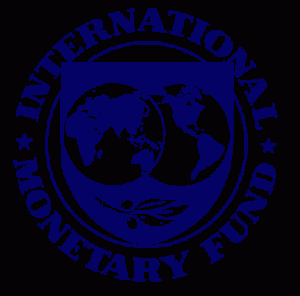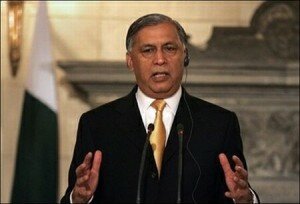
PAKISTAN’S ECONOMIC HITMEN: PART III
Posted on 06. Jun, 2010 by Jeff in Education and Culture
By Brig Samson S Sharof

IMF International Money Fleecer
The first two parts of my columns explained how Pakistan’s economy was set to meltdown. Come 2007 and as of today, the meltdown continues with complete contempt to National Security. Even the National Security Managers choose to look the other way. The principal dynamics that acted both as precursors and trigger points are summarised and listed below.
- The water managers within the Government of Pakistan despite being the biggest recipients of foreign loans till 2000 did not exercise vigilance on Indian water development projects mainly because they were guilty of corruption, negligence and technical insufficiency.
- The seizure of FCAs in 1997 however negative proved that a weak rupee was not a pre requisite to boost exports.
- Under the pricing mechanism of 1994, IPPs with tax exemptions had recovered investments and begun remitting profits and outsourcing costs abroad. They were the new energy manipulators to earn windfalls.
- The imposition of GST as a VAT was abandoned by CBR in 2000-1 converting it into an easy to collect levy. The incomplete GST regime did not help in documentation of the economy, and rather served to jump start inflation and discourage small sector domestic production.
- After 9/11, despite 13 Billion Dollars in the system and an appreciating rupee, the Central Bank ignored the lesson of WEAK RUPEE VERSUS EXPORTS and devalued the national currency.
- The government also ignored the basic theory that any country in a trade deficit must regard unexpected and non-fundamental appreciation of domestic currency as a boon to be used for cheaper imports and resetting of import priorities.
- Also to restore Rupee Dollar Parity, the government left Rs. 1 Trillion at the mercy of the Banking Sector, an equivalent of Pakistan’s entire National Savings from 1965 to 2001.
- Agriculture growth and pricing mechanism was deliberately discouraged and loop holes created for proliferation of Cartels.
- The circular Debt issue in the energy sector was the mechanism that set off all the triggers for meltdown.
Within the corridors of the government, many alternatives were also discussed but set aside by the Finance and Prime

Said to be IMF Agent!
Minister Shaukat Aziz. Steadily, all critics of such policies were either sidelined or made OSDs. Pervaiz Musharraf and his team were convinced that Shaukat Aziz offered the best solutions to revive the economy on lines of Asian Tigers and become an economic challenge to India and Dubai. Critics who pointed out that the high growth rates were attributable more to the circulation of loose money in the economy rather than tangible sustainable growth were dismissed as cynics and disruptive. But the fact remains that Musharraf era economic policies have backfired and all critics including myself stand vindicated.
So what the Government could have done?
GST/VAT
The FBR and PRAL should have developed cash machines for receipts of Sales Tax. The cost of this system could have been met through the GST revenue. Cell phone companies with their expertise to provide value added services could have provided another method of documenting the GST paid by each individual. All consumers at the fag end of the GST cycle should have been encouraged to claim refunds for items like households, fuel, electricity, gas and telephone bills. As envisaged earlier, the Income Tax Department could have picked up all this data and worked out the profit margins of the entire manufacturing and trading sector and then challenged the Tax Returns of the business community. As per the simulations carried out in 2000, the direct taxes would have grown exponentially. This mechanism was discouraged and a short cut adopted. But better late than never, this method can still be implemented rather than an incomplete and impractical mantra of imposing a new regressive VAT on a sinking economy.
Rupee Dollar Parity

Pakistan Money Managers move into Dollar
If the domestic private sector could not absorb the surplus money, the State could. With the increase of FCA remittances the Rs 1 Trillion windfall should have been easily absorbed in the State Sector through issue of Government securities at market rates to the holders. This would have appreciated the rupee, discouraged consumerism sponsored by banks and hedged national savings. Inevitably, the imports and therefore the value added exports would have become cheaper.
Privatisation
The justification that “It is not the State’s job to run commercial business” is a lie. The foreign enterprise which bought PTCL is a State Enterprise itself. Instead of privatizing the infrastructural assets, Pakistan could have built more State Enterprises instead of getting rid of the existing ones at throwaway prices. If management expertise was an issue, it could have been easily imported. Instead of giving the State Sector away to foreign businessmen who would slash employment for profitability alone and to remit dividends in dollars, the State could have instead imported the management expertise with a task to expand and justify the manpower employed. Unfortunately, Pakistan’s large scale consumer sectors like communications and energy are now foreign controlled. Unfortunately, even the reversal of Pakistan Steel Mills by the Supreme Court was not taken in this spirit and conditions created to run it dry.
Agriculture
The easy access to windfalls and mantra of privatisation obscured the importance of the agriculture sector. The government ignored that all along it was the agriculture sector that through value addition was the major component of the GNP. This effect is clearly visible in the Economic Survey of 2010 where the manufacturing growth has only picked up in the consumer sectors. Moreover, the marketing strategy of Dr. Zafar Altaf through limited intervention of imports of agricultural products had always stabilised domestic pricing and kept the pricing cartels in check. Dr. Zafar’s exit was the biggest disaster for the performing agricultural sector.
Considering that the Government never and even now refuses to set a correction course, where does the future lead us?
Even if the indicators given in the Economic Survey are to be taken at face value, the economy and social conditions are set to plummet to the lowest levels before the societal dynamics set in for a revolution. The question that still intrigues my mind and was raised repeatedly in all my columns is, ‘why must we commit this suicide bombing on ourselves?’
There are two explanations.
First, Pakistan’s elites that include militarymen, politicians, bureaucrats, technocrats, big business houses and dirty rich all have their money stacked in over seas accounts. It is neither in their financial interests nor wherewithal to challenge the equilibrium and downslide to restore Pakistan towards a performance criterion. Their only stakes in the system are political intrusions to ensure the status quo.
Secondly, the Government of Pakistan chose and continues to choose this path not because it is stupid but because it wants to do it deliberately. Consumption has to grow in all the exporting countries reliant on US as the major trading partner; otherwise the entire global monetary system will collapse along with the West and Breton Woods. The emphasis therefore has to be on CONSUMPTION, and not SELF-RELIANCE. As long as the world produces and West consumes, the system is not sustainable. Others need to consume as well.
This is why a country that survived sanctions for a very long time, despite massive influx of remittance continues to plummet to the dungeons of poverty. Societal implosion in Pakistan is seen as a viable thesis to Cut Pakistan to Size.
A note of thanks to Dr. Ashfaq, Dr. Zafar Nasir and Mr. Zahid an investment banker for their intellectual deliberations with me.
Brigadier Samson Simon Sharaf is a retired officer of Pakistan Army and a Political Economist. He is a regular contributor to Opinion Maker.
a WordPress rating system


pharmacy tech
07. Jun, 2010
What a great resource!